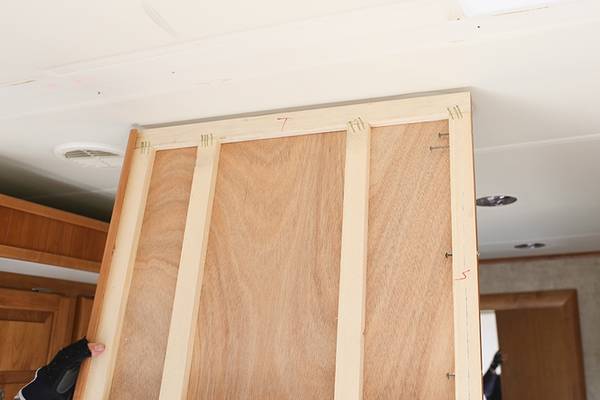
Luan for RV Guide (Finding 1/8 Inch RV Plywood Paneling)
For both the name and the plywood. If you are looking for just luan, it is also called filon. Filon is a different product than luan plywood which is usually made from mahogany. Filon is not as strong as luan plywood and used to be called luan board.
Finding either product is not going to be hard. Some dealers will have luan in stock but it may cost you $100 per sheet. Usually, the home improvement stores will have a large supply and their prices will vary.
To learn more about this standard RV product, just continue to read our article. It has the information you want to know about so you can do your own repairs and get the job done just right.
What Kind Of Plywood Do You Use For RV Walls?
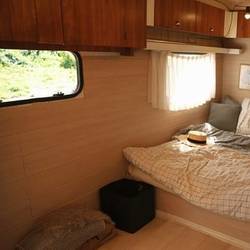
Luan plywood is ideal for this as it is cut very thin. Once you apply it you do not lose any real living space. The 1/8 of an inch thickness goes on quickly and fills many thin spots you need to replace.
The good news is that it is cut and handled like regular plywood. The key is to use the right depth on your circular saw. You do not need to have a lot of the blade showing when you do your cuts.
Also, luan plywood is easy to handle and you can use glue, nails, or screws to secure it in place. That is if you do not have a very thick spot to fill. Other than luan plywood, you can use any type and thickness that plywood comes in.
There is no real limitation for RVs or trailers when it comes to this type of repair material. Wood will work just about anywhere in your RV, etc., especially for walls and floors. It is easy to install and you do not need any special training, tools, or hazardous materials protection.
How Thick is The Plywood On RV Walls?
The actual thickness will depend on the materials used by RV makers as well as their bottom line. Usually, they are not going to be very thick and if you get a 1/4 inch plywood on your walls, consider yourself lucky.
Sometimes, the plywood used to make the walls will be as little as 1/8 of an inch or even 9/64ths of an inch. The materials used to build those walls can be luan plywood, composite plywood or MDF, and vinyl. It is all up to the discretion of the RV maker.
More expensive RVs, etc., may have thicker walls but then you are paying a higher price for that added thickness. But do not worry, you are not stuck with those materials if you have the money to replace them
Unfortunately, the stud work is not that great either and you only have about 2 inches or less to work with when you start nailing in your replacement plywood. The studs are not like house studs and may not be that strong either.
What Size Plywood is Used For The Camper Floor?
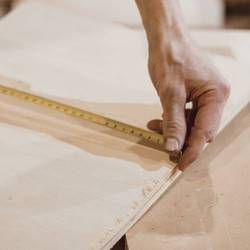
The first thing that has to be mentioned is that plywood usually comes in 4 by 8 pieces. You can get 4 by 4 or 2 by 4 sections but your costs may go up some. But if you do not want left over plywood, then buying a mixture of those options will help you use up all the wood.
Generally, you are looking at having 1/4 or 1/2 inch thickness on your floors. This does not offer a lot of protection or stability when you walk on it. These thicknesses are strong but you can always do better.
If you have the headroom, nothing is stopping you from pulling up the vinyl or carpet flooring and adding either another 1/2 inch piece or moving up to 3/4 “ thick plywood.
Going thicker will protect your sub flooring from water damage when you have bad leaks. If you want to know the ideal thickness, then you should upgrade to 3/4 inch thickness or 1 1/2 inch thickness.
You may lose a little headroom but after installation, you will have a great floor. Then to avoid squeaks, add some glue to the joists to make that floor solid when you crew it into place.
Best Plywood For RV Floor
You have a lot of choices and the composite, MDF, and vinyl options are not listed in the top best lists. To get the best, you should go for marine-grade plywood. This is material used for boats and other marine applications.
This plywood option is made using waterproof glue and is designed to resist rot, decay, and termites and other insects. The next best flooring material would be any one of the hardwoods.
These hardwood options are baltic birch, oak, poplar, walnut, and maple. Plus, you can’t go wrong with treated plywood as it does the same job as marine grade except it may not be made with waterproof glue.
There are different styles of plywood as well. Tongue in groove hides all the seems and helps the wood join together easily. Then, you should watch the grade of the wood. There are A, B, C, & D grades with A being the best and D the not so best.
You will pay more for the top grades and also, you can get these grades in 3-ply or 5-ply options as well as multi-ply. There is a lot to think about when it comes to replacing the flooring in your RV or trailer.
For more information read our article at this link.
Luan Paneling For RV
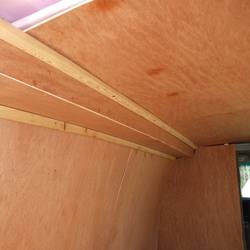
Paneling is a bit different from the material you place on the studs in your RV walls. Luan plywood is good for the underneath portion but it will not look good unless you add vinyl, paneling, or some other exterior product.
When it comes to paneling, you have lots of options. It will all depend on how you want your RV to look on the inside. If you want a spacious interior, you need to go light. If you don’t then you need to go with a darker paneling color.
There are lots of designs to choose from so you have to spend some time looking at different paneling. Pick the one that pleases your eyes the most. Keep in mind that almost all wall paneling is sold in 4 by 8 sheets. You may end up with some large sheets left over.
To get more of an idea about paneling, see our article on this topic at this link. If you want to keep the bugs away, go with a cedar-made paneling product.
How Thick is RV Luan?
The two most common sizes you can buy luan plywood in, are 1/4 inch and 1/8 inch. There may be other thicknesses but these are the two standard sizes. Any thinner and you will have very weak wood that won’t take a lot of effort to break.
You do have other options when it comes to plywood. It will all depend on how much space you want to give up. Another 1/4 inch thickness should not be too bad and if you can find luan in 1/2 inch pieces then go for that size. It may be more expensive but the thicker the wood, the more security and stability you will have.
Or you can go with a nice soft pine or fir plywood. These work well and are a lot stronger than the word soft implies. They may also be a bit cheaper than luan plywood as that type of wood has to be imported.
The hardwood trees used to produce this wood are found in Southeast Asia including the Philippines. There are now other countries' trees that are being used but they are not found in the western world.
1/8 Inch Plywood Paneling
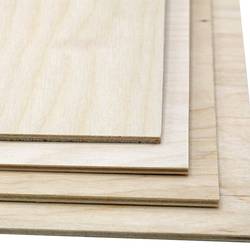
This is not going to be hard to find. These sheets are on sale just about everywhere paneling is sold. That includes the big box home improvement stores.
Home Depot, Lowes, and similar outlets will have a large array of 1/8 inch paneling and it will all be made of different wood materials. Plus, you should check out your local home improvement stores (non-national or international chains) to see what selection they have and the price they are selling it at.
The hard part of your search will be filtering out all the great colors, designs, and styles. Prices will vary depending on the region of the country you are living in and the store you decide to shop at.
Also, hardwood paneling usually is more expensive than softwood as the latter is easier to get and to make into the paneling. Plus, you do not have to stick with 1.8-inch paneling. If you want you can move up to 1/4 inch thickness. Those are found at the same retailers. You can make your choice when you get to the store.
RV Ceiling Panels Home Depot
There is usually a good selection at this retail outlet. Making sure you have a good selection of materials to buy is the heart of their business. The price will depend on the type of ceiling panels you buy.
The same wood available for your walls and floors is available for your ceilings as well. But since the roof leaks more than your plumbing, you may want to consider treated wood or marine grade plywood.
Those two types are designed to resist water with the latter using waterproof glue. That is a bonus and helps keep any water damage to a minimum. Or to keep the weight down, you can go with FRP or PVC ceiling panels.
These are lighter than other plywood materials, are already water-resistant, and come in a white color so they do not need paint. There is also MDF with wallpaper already placed on it.
This wood is okay, but its value depends on who uses it and if they like it or not. To find these panels, as well as wall and flooring panels, you can go to your local lumberyard and see what prices they are selling at.
1/8 Door Skin Plywood
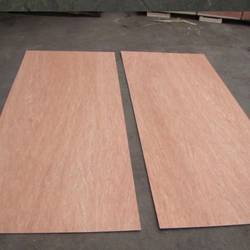
This is generally the material you will find on both sides of a hollow core door. It does its job of providing privacy but it is not very strong. It should be cheaper than other plywood materials. If you are looking for longevity, durability & strength, then this is not the material you want to use.
It is okay and does a good job, but it will not be of any help if you are in an accident. To offset that lack, you can get these door skins in hardwood plywood but their availability will be up to the retailer selling the paneling and door skins.
To buy any of these options we have discussed here, you can go directly to your big box home improvement store or lumberyards. Or you can try shopping online and see if those prices are cheaper.
The online stores have less overhead than the physical warehouses. You may be able to buy more for the same price elsewhere. There are always recycling places as some people do recycle old wood when it is in top condition.
Check around as you may find a close-out store with a load of luan or other plywood they want to get rid of.
Some Final Words
Luan on for RVs is plentiful. You just have to pick the right outlet to make your purchase. As the thickness grows so does the price. So shop around for the best price and make your selection.
The same goes for interior wood paneling. There are a lot of places where you can get great colors and designs for a reasonable price. Just make sure to get the best grade your budget can afford. The top grades are superior to the lower ones.

